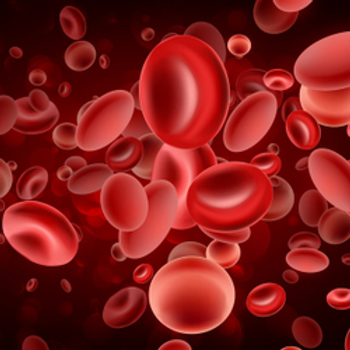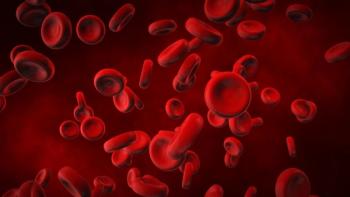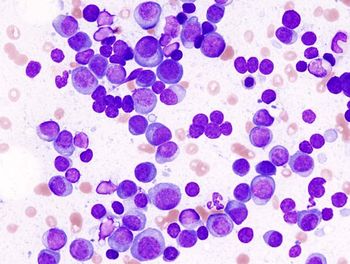
Oncology NEWS International
- Oncology NEWS International Vol 5 No 1
- Volume 5
- Issue 1
HDC/ABMT Has Benefits in Multiple Myeloma
SEATTLE--French researchers have recently concluded a study of multiple myeloma in which high-dose chemotherapy combined with autologous bone marrow transplantation (HDC/ABMT) resulted in a significant improvement in response rate and overall survival, compared with conventional chemotherapy.
SEATTLE--French researchers have recently concluded a study ofmultiple myeloma in which high-dose chemotherapy combined withautologous bone marrow transplantation (HDC/ABMT) resulted ina significant improvement in response rate and overall survival,compared with conventional chemotherapy.
Michel Attal, MD, PhD, head of the Bone Marrow TransplantationUnit, Purpan Hospital, Toulouse, presented the study results atthe American Society of Hematology's 37th Annual Meeting.
Dr. Attal said that conventional chemotherapy for multiple myelomahas proved disappointing, with a median overall survival rateof only 2 to 3 years and few, if any, complete remissions.
To improve these results, a high-dose chemotherapy regimen usingmelphalan (Alkeran) was developed for the treatment of aggressivemultiple myeloma, and has been anecdotally reported to inducean improved response, including some complete remissions, in patientsrefractory to conventional dosages. This improved response wasachieved at the expense of serious myelotoxicity, but use of ABMThas reduced this toxicity.
A direct comparison of this method with that of conventional treatmentmodalities has not previously been possible, due to patient selectionbias (including young age and normal renal function), Dr. Attalsaid. The 5-year prospective trial, conducted by the IntergroupeFrançais du Myelome (IFM 90) in Toulouse, was designedto remove this selection bias.
At diagnosis, 200 patients under age 65 with intermediate or hightumor mass (stage II/III DS), previously untreated multiple myelomawere randomized to receive either a conventional chemotherapeuticregimen of VMCP/BVAP or high-dose therapy, consisting of melphalan(140 mg/m²) and total body irradiation, supported with unpurgedautologous bone marrow, collected after two cycles of VMCP/BVAP.Maintenance with alpha-interferon was used in both arms.
The response rate was significantly better in the high-dose arm(22% complete response) than in the conventional arm (5%) (P lessthan .001). For the category of "very good partial response"(ie, greater than 90% response), the numbers were 16% vs 9%, respectively.
Forty-three percent of patients in both groups achieved a partialresponse, while 19% of high-dose patients showed minimal responseor continued progression of their disease, compared with 43% inthe conventional group.
At a median follow-up of 40 months, the 5-year postdiagnosis probabilityof survival was 52% for the high-dose regimen vs 12% for conventionaltherapy.
Initial response to therapy proved to be one of the most significantfactors for long-term prognosis, Dr. Attal said. Of the high-dosepatients who survived more than 1 year, those with a completeor very good initial response had a 72% probability of 5-yearsurvival, while those with a partial response had a 39% probability.No patients with minimal response or progressive disease post-treatmentwere predicted to survive for 5 years.
Dr. Attal noted that a new IFM-90 protocol is underway to testthe impact of double vs single transplant in improving responserates (see story above).
Articles in this issue
almost 30 years ago
HCFA Reevaluations May Affect Chemo Administration Cost Codesalmost 30 years ago
Breast Cancer Info Now on Internetalmost 30 years ago
Clinical Trial to Study MoAb 17-1A as An Adjuvant to Colon Cancer Therapyalmost 30 years ago
Reporting of Study Comparing Casodex, Eulexin Is Questionedalmost 30 years ago
Limits on Tamoxifen Duration Questionedalmost 30 years ago
ACRO Forecasts Radiologist Surplusalmost 30 years ago
Potency Status Before RT, Not Dose, Determines Post-RT Functionalmost 30 years ago
Dr. Klausner Outlines Goals for NCIalmost 30 years ago
Difficulties in Translating Relative Risks Into Absolute Riskalmost 30 years ago
Managed Care: To Live and Die in LANewsletter
Stay up to date on recent advances in the multidisciplinary approach to cancer.


















































































